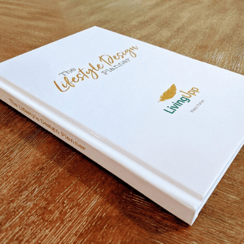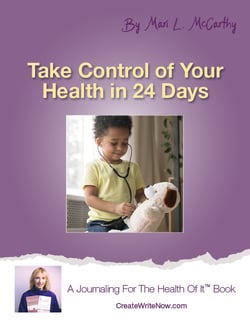It’s easy to feel overwhelmed by everything happening in the world right now. With each scroll or click, you’re likely to find stories of struggle and heartache—from the COVID-19 pandemic, to the violence and injustices happening within our communities, to the fear that comes with uncertainty about the future. The surge of emotion that often accompanies these heavy life moments can take a serious toll on our health if left unaddressed.
That’s why self-care is so critical in times of crisis. It offers a healthy way to process what’s happening around you, so you can recover your ability to find creative solutions to the challenges you face. And self-care looks different for all of us. My emergency self-care plan includes taking walks in nature, journaling, and meditation—all of which require me to disconnect periodically and go inward. Taking time to tend to my needs allows me to recover my strength to continue being in service to others.
That’s what resilience does for us.
What is Resilience?
Resilience is a topic that surfaces frequently within wellness circles. And for good reason. When stress isn’t managed well, it can lead to anxiety, high blood pressure, poor immune function, insomnia, depression, digestive disorders, and many other illnesses.
Resilience is described as the ability to bounce back from difficult situations, a trait that’s often associated with strength and adaptability. The American Psychological Association defines it as “the process of adapting well in the face of adversity, trauma, tragedy, threats or significant sources of stress.” Resilient people don’t ignore problems in the world, but they do know how to avoid being consumed by them. Researchers have identified two primary characteristics that are commonly found in resilient individuals:
- the ability to identify the effects of stressful situations
- the ability to experience positive outcomes despite adversity
Put simply, resilience is what helps us overcome hardship.
Know Your Emotional Capacity
Understanding how much stress you can carry is the key to managing it. It requires self-awareness and the ability to notice subtle changes, both physically and emotionally. Here are a few ways you can get to know your emotional capacity on a deeper level:
Listen to Your Body
Pay attention to your physical and emotional responses to what’s going on around you. Notice when you feel tightness in your body, when you feel warm, when you feel intense emotional energy. Those are signals that you’re reaching your capacity. Listen and observe by making notes in your journal to identify patterns. This will help you learn to predict how you might respond to similar situations in the future.
Label Your Feelings
Learning to label your feelings helps you better understand them. Describing your feelings in words is a powerful practice that gives you insights into your capacity when it comes to emotionally charged situations. Journaling gives you a way to explore your feelings when life’s heaviness becomes too much to carry. Writing down complicated life experiences is a self-care strategy that can help you manage your emotions and build more resilience.
Limit Your Exposure to Stressful Situations
Limit how much media you take in. Turn off the news. Set limits on the amount of time you spend scrolling on your digital devices. Avoid distressing situations and conversations when you reach your capacity to manage them well. Creating boundaries doesn’t mean you don’t care about what’s happening around you; it just means that you recognize when you don’t have the physical or emotional ability to address them in a positive way. Self-care offers a way to restore your capacity, so you can come back to situations when you’re better able to manage them. Not honoring your capacity only diminishes your ability to be in service to others.
Find Healthy Ways to Release Negative Emotions
Ignoring negative emotions can be counterproductive, and allowing them to build up often leads to emotional eruptions that can damage relationships and leave you feeling even more negative. When negative feelings linger, as a result of rumination or suppression, it can result in feelings of depression and anxiety. That’s why letting go of intense emotional energy helps build resiliency. Here are some healthy ways to release negative emotions:
Move Your Body
In times of stress, moving your body is a simple way to shift your mindset. Do some stretching. Go for a walk. Take a yoga or fitness class. Physical activity is an effective stress management tool that doesn’t require a lot of skill or time. Taking just a short, 10-minute walk releases “feel-good” chemicals called endorphins, which can reduce stress levels and boost your mood.
Write Expressively
Psychologist and researcher James Pennebaker, PhD found that writing or talking about personally upsetting experiences can have a positive impact on your health. Translating complex feelings into words can be a powerful way to release negative emotions. Getting your thoughts and feelings out onto the pages of your journal offers a safe space for you to sift through them. Expressive writing has been shown to reduce physical symptoms associated with many health conditions, and improve overall psychological well-being.
Connect with a Professional
Therapists and mental health experts are trained to offer guidance for navigating difficult emotional experiences. If you’re struggling to work through a particularly challenging situation on your own, seek out support from an expert. The National Suicide Prevention Lifeline offers free and confidential support for those in suicidal crisis or emotional distress 24 hours a day, 7 days a week. You can reach them via chat or by phone at 1-800-273-8255.
Journal Prompts
Looking for some journal prompts to help you further unravel the intense emotions you’re experiencing right now? Consider these prompts as you move toward designing a more resilient life.
What am I feeling right now? Put your feelings into words. Describe how your physical body is feeling. Describe the thoughts you have. Come up with as many words as you can to label your emotions. Using a thesaurus is sometimes helpful.
What do I need right now? Think about what you need right now, at this very moment. Which self-care strategies would be the most helpful to you?
What do I want to come of this? Think about the best possible outcome for the situation you’re currently facing. What would you like to see happen? Focus on the positive results you want to see.
The process of designing a more resilient life requires self-awareness and a willingness to explore your thoughts and feelings on a deeper level. Make a personal commitment to experiment with new self-care strategies that help you better manage stress.
What will you do today to build more resiliency?
Information contained in this article is for educational purposes only and should not be interpreted as providing or replacing medical advice, diagnosis or treatment.

Author bio: STACY FISHER, RDN, LD, CDCES is the founder of LivingUpp™, a lifestyle design company that teaches women how to use a self-care planning  system to create more ease and better health. She is a registered dietitian and lifestyle coach with 20+ years of experience in the healthcare industry, where she’s worked with large companies such as Dell, Boeing and Nike. Stacy is the author of The Lifestyle Design Planner, a flexible life organizer for high-achievers who value self-care and simplicity.
system to create more ease and better health. She is a registered dietitian and lifestyle coach with 20+ years of experience in the healthcare industry, where she’s worked with large companies such as Dell, Boeing and Nike. Stacy is the author of The Lifestyle Design Planner, a flexible life organizer for high-achievers who value self-care and simplicity.
NOW ON SALE!



Leave Comment